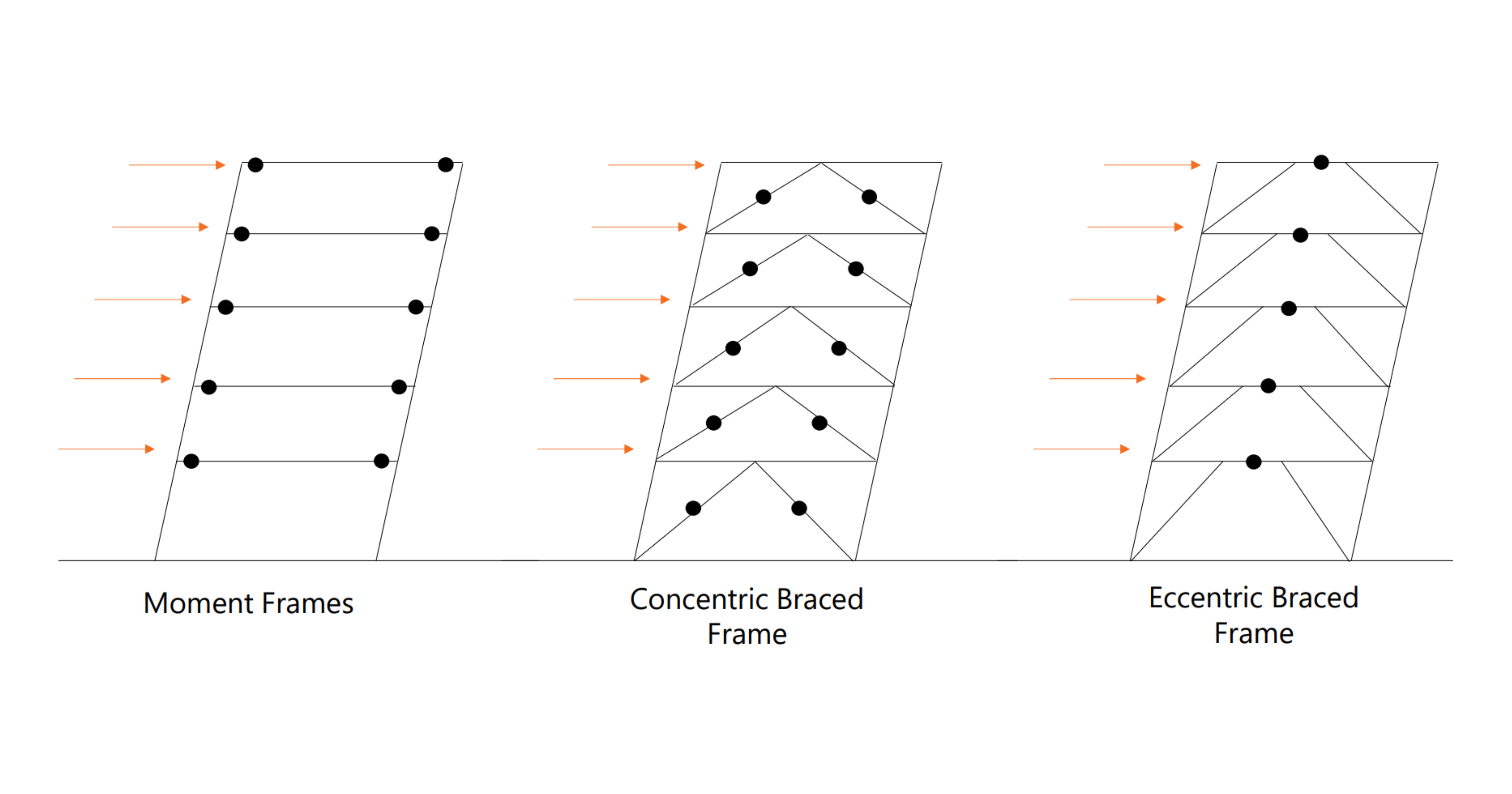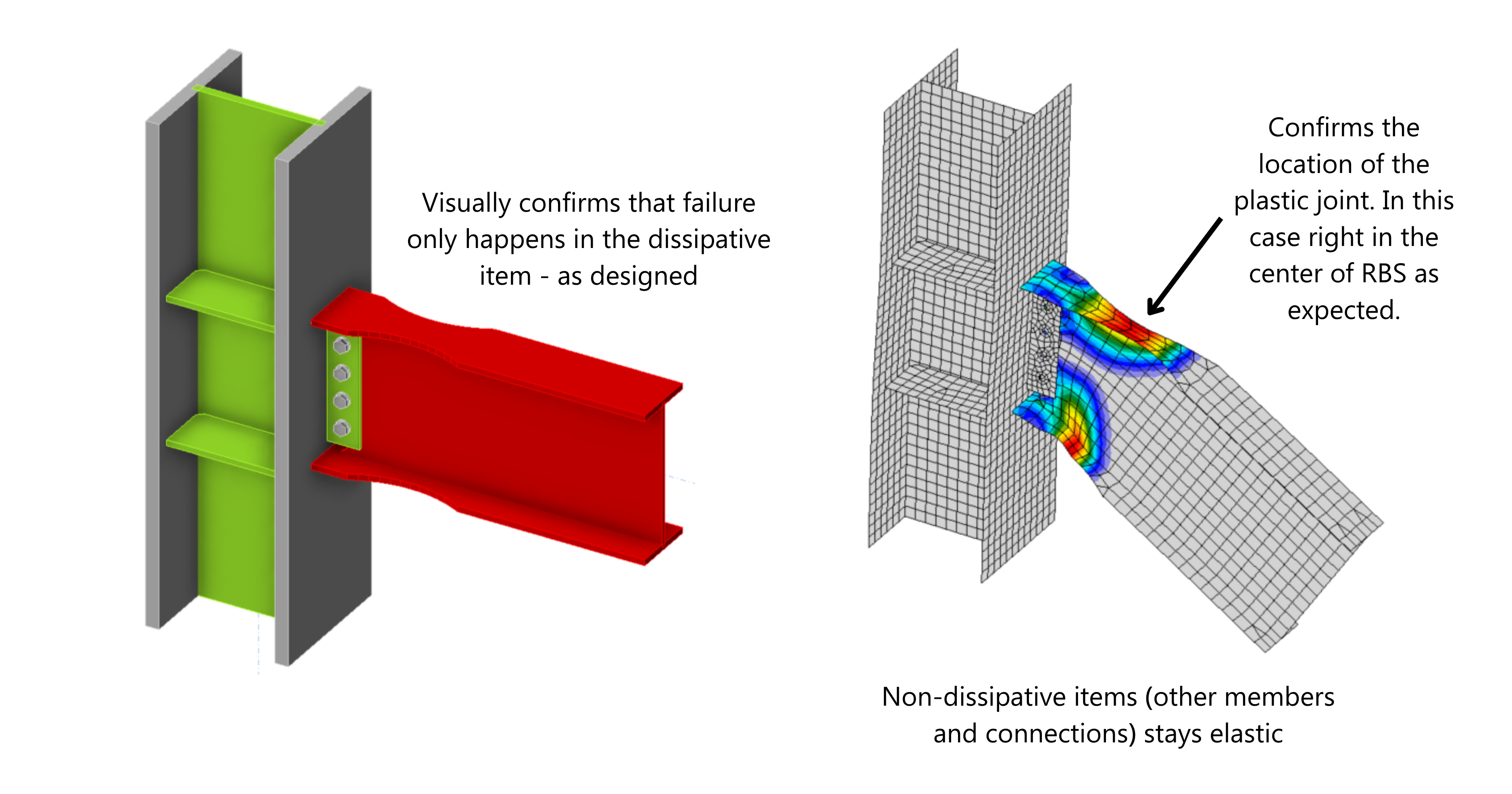Seismic design
In seismic design, the objective is not simply to prevent structural collapse but also to ensure that the structure performs in a predictable and controlled manner, even when subjected to strong ground motion. Engineers must ensure that the building goes to controlled yielding mechanism, where selected parts of the structure are allowed to yield, deform, and dissipate energy, without compromising overall stability.
Lateral resisting system
Engineers can decide which type of lateral resisting system to implement. Each system has their specific controlled yielding mechanism which the engineer must ensure that their structure will behave as such.
- Moment Frames (MF): yielding must occur in beams
- Concentric Braced Frames (CBF): yielding must occur in bracings
- Eccentric Braced Frames (EBF): yielding must occur in the link elements
To reach the intended yielding mechanism, engineers apply capacity design principles. The dissipative items are designed to yield during earthquakes. Their expected strength is amplified by an overstrength factor to account for the actual material capacity and strain hardening. The non-dissipative items (such as columns, joints, and connections) are then designed to resist this amplified force elastically. This ensures that yielding occurs only at the intended locations. Connection design plays a key role in achieving this goal.
Connection design
By properly detailing connections, engineers can ensure that plasticity develops in predefined zones such as beam ends or brace elements.
Although codes and design guides provide formulas to ensure yielding occurs in the intended elements, these checks can be complex, system-specific and connection-specific. This means that the engineer has to create separate spreadsheets for each system and connection. In addition, once the design is complete, traditional methods offer no direct way to visualize how a connection behaves under seismic loads or where plasticity develops. Furthermore, if the connection is not covered by design guides, the engineer is left without clear directions.
IDEA StatiCa simplifies this process by offering a single platform for designing and checking connections across all lateral resisting systems. This not only verifies the design according to capacity design principles but also allows the engineer to visually identify where yielding occur, making seismic connection design more intuitive and accurate.
Conclusion
It is important to correctly detail a structure to achieve the intended yielding mechanism. While design codes and guides provide comprehensive formulas and procedures, they are often lengthy and system-specific. IDEA StatiCa streamlines this process by enabling engineers to perform capacity design checks for various structural systems within a single platform.
Let's see how IDEA StatiCa can help you in each scenario
- Detailing of Moment Frames using Prequalified Connections - AISC
- Eurocode (coming soon)
- Indian Standard (coming soon)
- Australia (coming soon)




